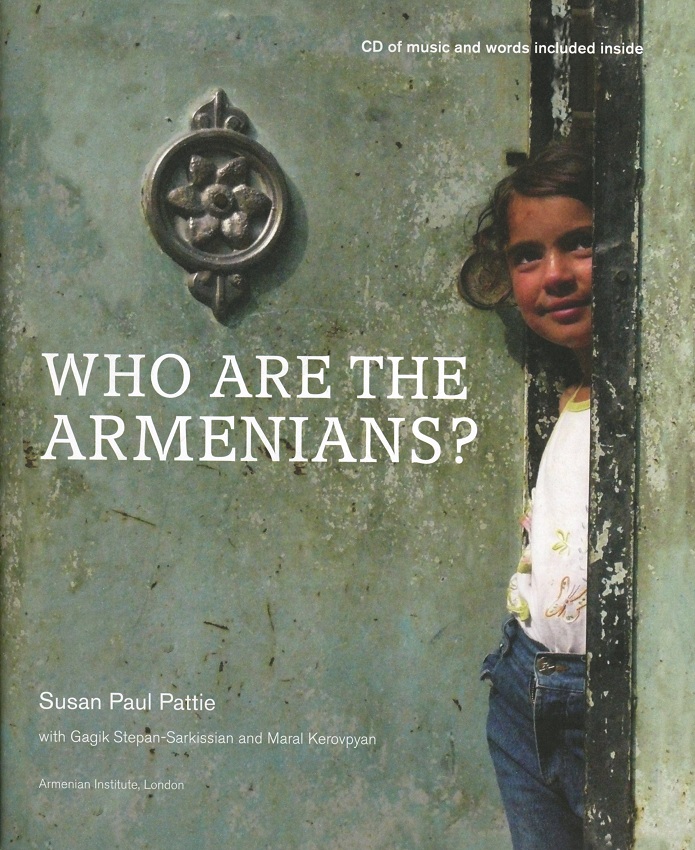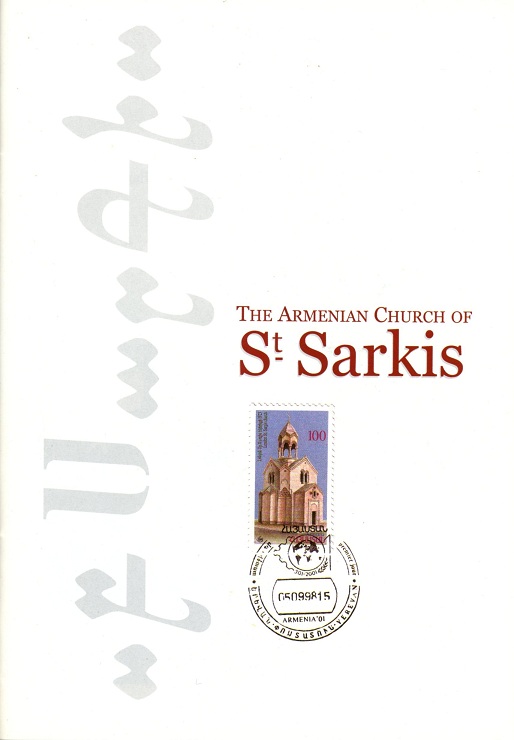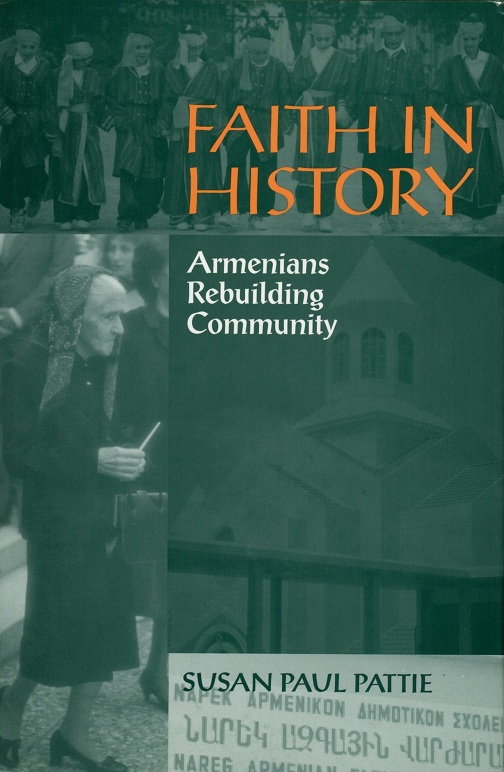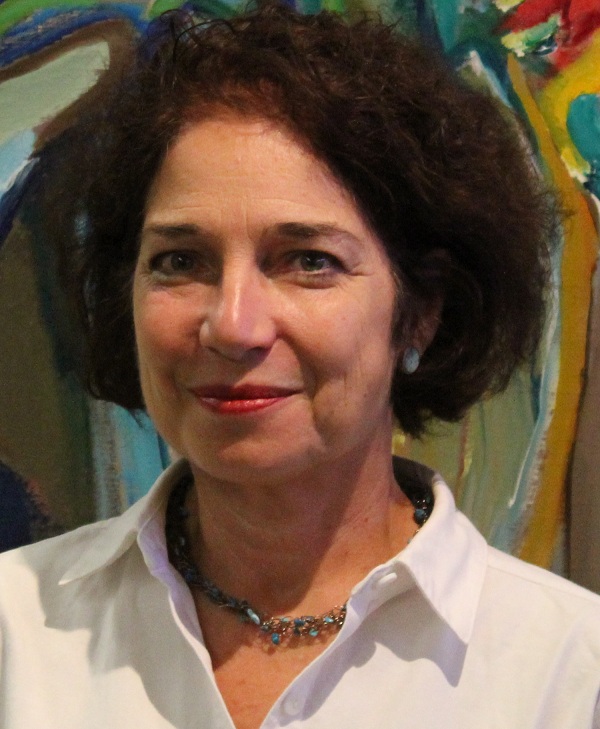
249 Rangement général
 | | Who are the Armenians? |
| Titre : | Who are the Armenians? / auteur(s) : Susan Paul PATTIE - With Gagik Stepan-Sarkissian and Maral Kerovpyan |
|---|
| Editeur : | Armenian Institute London |
|---|
| Année : | 2010 |
|---|
| Imprimeur/Fabricant : | |
|---|
| Description : | 21,5 x 26 cm, 48 pages |
|---|
| Collection : | |
|---|
| Notes : | CD of music and words included inside |
|---|
| Autres auteurs : | |
|---|
| Sujets : | Armenia -- Armenian culture |
|---|
| ISBN : | |
|---|
| Lecture On-line : | non disponible |
|---|
Commentaire :Who are the Armenians? Is a fascinating guide for both children and adults to learn about the Armenian people. Aimed at children aged 5-12, the book brings the 3000-year-old Armenian history and culture to life through folktales, language, food, religion, music, dance, art, poetry, sports and games. The book includes information about the Republic of Armenia and also explains how Armenians have made homes all over the world. Who are the Armenians? presents the lives of children in Armenia and diaspora countries showing how they live today. A CD is included with songs, poems, dancing music and spoken words.
An Introduction for Young Armenians This book is especially for you. We want you to know about the ways your families lived in the past and the ways Armenians live today. You will learn about Armenian history, language, food, music, arts and crafts. All these are important. But just as important is the fact that Armenians have always lived with other peoples. Over many centuries, we have learned from our neighbours around the Middle East and the Caucasus. We have made our own contributions to the different countries that we have lived in. With the widening diaspora throughout the twentieth century, we have made homes all around the world. Armenians continue to be known as a people who can learn many languages and understand the customs and habits of their neighbours. This is one of our most important traditions and it is one that we hope you will continue. Let's start by learning more about ourselves. |
336 Rangement général
 | | The Armenian church of St Sarkis |
| Titre : | The Armenian church of St Sarkis / auteur(s) : Susan Paul PATTIE - |
|---|
| Editeur : | The Armenian institute |
|---|
| Année : | 2007 |
|---|
| Imprimeur/Fabricant : | |
|---|
| Description : | 15 x 21 cm, 24 pages, couverture illustrée en couleurs |
|---|
| Collection : | |
|---|
| Notes : | Détails sur la construction : cliquer ici |
|---|
| Autres auteurs : | |
|---|
| Sujets : | Armenian Church -- St Sarkis |
|---|
| ISBN : | 0954360923 |
|---|
| Lecture On-line : | non disponible |
|---|
Commentaire :St Sarkis church was built in 1922-23.
Sont notamment reproduits dans ce document les correspondances entre les fondateurs et Calouste Gulbenkian, qui intervient alors qu'une souscription a déjà été lancée dans la communauté arménienne.
Calouste Gulbenkian est très clair :
- il souhaite ardemment contribuer
- il souhaite d'ailleurs être l'unique contributeur, et suggère de rembourser les précédents donateurs
- et bien entendu l'église devra porter la dénomination "St Sarkis", du nom du père de Calouste
- ce qui fut fait. On ne résiste pas à "M. Cinq pour cent" !
27 Quai d'Orsay Paris, 10 January 1921
Very esteemed and dear Dr Abrahamian , With reference to the conversation I had the pleasure of having with you in Paris, when I intimated that I would be very interested in the construction of a Chapel for our Colony in London, I beg to pat on record the tenor of our conversation to the following effect, i. e. I shall be very pleased indeed to place at your disposal the sum of 15,000 Pounds, on the understanding that you will appoint a Committee of the Members of our Colony in London to be presided over by you, which Committee will act in consultation with me for the purpose of erecting a small Armenian Chapel with an adjoining residence for the Incombent thereof.
The principal of my offer is that the construction of the Chapel and the purchase of the land -- in a word the whole operation, shall not exceed the above sum of 15,000 Pounds. As I explained to you. I can only maintain this offer on the understanding, first, that the above sum shall not be exceeded, secondly that no other contributions which you may have received or may receive from Members of our London Colony or elsewhere shall go to increase the 13,000 Pounds for the purpose of building a larger edifice, as it is my intention that the whole building and the land should be dedicated to the memory of my father and be called « SOURP SARKIS ».
I am aware that you have already purchased the land, so that out of the above sum of 15,000 Pounds you will have either to refund the contributions thus employed, or on the other hand, to set aside those contributions to be used by our Colony as an Endowment for the Chapel and for the Incumbent. Thus those of our Colony who are desirous of making donations, financial or otherwise, may do so — provided that my desire be recognised to be the sol instrument in the purchase of the land and the erection thereon of the Chapel. I would respectfully suggest that the construction be delayed for a few months in order that advantage may be taken of a fall in the cost of materials. There is no immediate hurry for this Chapel, and I believe greater advantage will be obtained in the laying out of the fund if the construction be not unduly pressed forword.
I would like to point out that, in limiting the fund to 15,000 Pounds, my aim has not merely been to restrict expenditure, but rather because I am firmly convinced that in the present distressed condition of our Nation, it would be improper to expend a larger amount for the construction of a Chapel in London. When the construction commences, I will place at your disposal the necessary amounts as and when they are needed, and I will be pleased to refund the sums already paid for the land when the construction has been decided upon and work commenced. It is my desire that the Chapel should be erected on the lines of the Armenian Architecture about which I have spoken to you.
In conclusion I beg to emphasize that had it not been for your personal and strenuous efforts in this connection, I would have deemed this work to be premature having regard to the sad state of our general national conditions. Believe me, dear Dr Abrahamian, with the highest consideration, Yours very sincerely (Sgn.) |
242 Rangement général
 | | Faith in history - Armenians rebuilding community |
| Titre : | Faith in history - Armenians rebuilding community / auteur(s) : Susan Paul PATTIE - |
|---|
| Editeur : | Smithsonian Institution Press |
|---|
| Année : | 1997 |
|---|
| Imprimeur/Fabricant : | USA |
|---|
| Description : | 16 x 23,5 cm, 282 pages, couverture illustrée en couleurs |
|---|
| Collection : | Smithsonian series in ethnographic inquiry |
|---|
| Notes : | "For Levon" ; Bibliogr. p. 267-275. Index |
|---|
| Autres auteurs : | |
|---|
| Sujets : | Arméniens -- À l'étranger -- Identité collective |
|---|
| ISBN : | |
|---|
| Lecture On-line : | non disponible |
|---|
Commentaire :Armenians are an ancient people with roots in eastern Anatolia going back 2,500 years. Yet almost half of them today live in diaspora. Slaughtered and deported from their homeland by the Ottomans during World War I, surviving Armenians scattered to different corners of the globe. Focusing on Armenians who settled in Cyprus and London during the course of this century, Susan Paul Pattie reveals how the mechanisms for creating and maintaining a sense of community and national identity have evolved, as early survivors have given way to second- and third-generation Armenians who are increasingly at home in their host societies. Drawing on five years of field-work, Pattie shows how the Armenian language and such institutions as the Apostolic Church, with its elaborate ceremonies, once acted as key repositories of identity but now function more as symbols within a larger faith—a faith in Armenian history as a transcendent, unifying force for Armenians worldwide. For some contemporary Armenians in diaspora, this faith in history is energized by political organizations fighting for Turkish acknowledgment of responsibility for the Ottoman massacres. But for most, belief in the past serves as an underpinning for the mechanisms of family and community. Portraying the relation between religion and nationalism in concrete terms, Faith in History also investigates the increasingly common experience of diaspora. In wonderful vignettes of Armenian daily life, this book evokes the ways in which perceptions of nation and homeland shift and evolve.
Preface I am half Armenian, am married to an Armenian, and spent two years in Cyprus as a child. When choosing a fieldwork site, I was drawn to Cyprus, where I felt something could be learned about the ways different ethnic groups interact and how this changes over time. After an initial attempt to avoid working with Armenians, out of a false concern that I was too close to the subject, I realized how few ethnographic accounts have been written about Armenian life in the Near East or the Mediterranean.1 And when I began, I soon discovered that I was close to the subject only in a very abstract sense, one that little impressed some people.
Because I was born and raised in America, the product of a "mixed marriage," a Protestant, and only just learning Armenian, many people were not too shy to tell me that I was the personification of the sad future in store for the Armenian nation—assimilation, Westernization. But as the work continued and it appeared I might be serious, this attitude mellowed considerably, and people often praised my mother to me for having raised her children to be aware of being Armenian. It was difficult to explain that she had not consciously tried to do this. At the same time, my personal "ideal Armenians," my mother's brother and mother, were certainly very different in attitude, interests, and habit from many of the people I met in Cyprus and London. Until then it had never occurred to me that there might be a way of being Armenian different from that of my uncle and grandmother, and it took some time to realize how many different ways of feeling Armenian there are.
My marriage to an Armenian from Cyprus just as my fieldwork was beginning clearly had an important influence on the work. In a small community most families know each other, and as a musician, Levon was well known himself. The goodwill and trust that went along with that had the advantage of opening doors more easily and quickly than I could have done alone, even given the great importance of hospitality. But it also meant arriving with part of my identity already accounted for, since I was now attached to a certain family with its own history.
In any fieldwork situation, being a man or a woman must make some difference to relationships, but gender is only one aspect of a person among others, including age, marital status, family, interests, personality, and probably appearance. These easily discernable features are important as one makes first impressions (and forms them oneself) but begin to fade as more solid connections are formed on other bases. While in Cyprus I gradually changed my own self-presentation, starting with clothes, as I realized that I was constantly and seriously underdressed. Women of my age (at that time I was in my mid-thirties) and older dressed much more formally and fashionably. At one point I remember feeling quite proud of myself for having guessed correctly and worn a "nice" dress to a coffee morning—until my gaze fell to floor level, where I noticed pairs and pairs of shiny high-heeled shoes and one pair of dusty, dirty flats, which were my own. I never did give up walking between homes and appointments, something that was accepted as only slightly less eccentric than my early efforts on a bicycle.
How are we judged in the field? What are the different expectations associated with a fieldworker of a particular gender and age? Does it make a difference in terms of information gathered? Women were very friendly, warm, and receptive in both London and Cyprus. Many made every effort to think of new ideas to help me. Often my day would be programmed by a friend or relative who had thought things over and decided that my study would not be complete if I did not meet a certain person or see a special event or place. All of these arranged events were greatly appreciated, but equally valuable were the informal times spent around kitchen tables together. Men were also willing to talk, inviting me to their shops, clubs, and offices and making suggestions for further investigations. Whether it was because of my friendship with their wives, relationships with my husband and family, or common interest in the subject, I always felt welcomed by men as well as women.
Armenian Cypriots are multilingual, speaking Armenian, English, Greek, Turkish, and often some French and Arabic in varying degrees, depending on their generation and particular education. I began to learn Armenian as my fieldwork started and by the midpoint of the research found that I could follow the changes in language used during a single conversation. There was always a drift toward English, however, as all in London and most in Cyprus speak it very well. Why worry about speaking Armenian at all, then? For one thing, a few people do not speak English, and others are uncomfortable with it. Just as important, however, I found that learning Armenian enabled me to be part of casual group conversations and also helped me get an idea of current language use. In this way, French and Turkish were also useful, and Greek certainly would have been, had I had the time to learn. Because of the particular development of the Armenian community in Cyprus, few members of the oldest generation spoke Greek well, while young people now speak Greek as fluently as their elders spoke Turkish. Unless otherwise noted, in this text Greek is used to mean vernacular modern Greek as it is spoken in the cities of Cyprus. This is not the Cypriot dialect (which is still spoken in some villages) but has a recognizable accent and a number of particular expressions. Demotiki, modern spoken Greek, learned at school, is often called "proper Greek" by older Armenians concerned about grammatical mistakes in their vernacular.
Most conversations, whether primarily in English or primarily in Armenian, included phrases, words, and even whole sentences in other languages. Armenian, Turkish, or Greek words that are regularly used when speaking another language or that are hard to translate succinctly are shown in italics, with a translation supplied either immediately or in the glossary. I have not indicated the crossovers in language in the translations of conversations.
Fieldwork consisted of a series of extended visits to Cyprus between 1983 and 1988 while I was based in London. This method brought along its own advantages and disadvantages. The continuation of contact over five years gave the study a longitudinal dimension. Working in London in between trips to Cyprus also meant keeping in contact with Cyprus, even at such a distance, as events and people there figure extensively in the lives of Armenians in London as well. The disadvantages are equally obvious. The shorter periods I spent in Cyprus created a rush to get certain things done in a limited amount of time, whereas the traditional longer stay allows a gradual progression of friendships, meetings, and events to occur and gives a more day-to-day view over the course of the year. This aspect emerged in London.
Information, impressions, and ideas were gathered by arranging interviews (that is, by making an appointment to ask certain people specific questions); through more informal conversations with individuals and groups of people; by reading articles, letters, and memoirs written by and about Armenian Cypriots; through attending parties, social activities, and other events; by visiting institutions (schools, churches, clubs); and by generally hanging around as much as possible, at workplaces and in homes. I used a tape recorder when it appeared that it would not intrude. Several people asked me to record their comments because they had something particular they wanted others to know about. Most frequently I took copious notes while we spoke. This is clearly impossible at parties or on the street, so in those cases I wrote as much as I could remember immediately afterward.
Names have been changed except in a few instances in which the person or incident is very well known (Bishop Saradjian, for example). The titles Mr., Mrs., and Miss are used as Armenians and other peoples of the eastern Mediterranean do, with the first name most of the time. Today such titles are frequently not used with people of the same age or younger, and I have followed this pattern.
Since the conclusion of my fieldwork there have been many important events and developments in the lives of these communities, such as the opening of new Melkonian Institute buildings, more Londoners returning to Cyprus to work or to retire, and new internal political divisions. Within the wider Armenian world, change has been more dramatic, including the 1988 earthquake in Soviet Armenia, conflict in the Caucasus, the disintegration of the Soviet Union and the independence of the Republic of Armenia, and further troubles and then a tentative peace in Lebanon. This study necessarily covers a limited period but should provide some basis for understanding the ways in which people react to these and other changes and incorporate them in their lives. |
|




